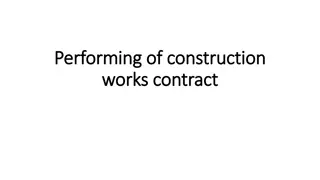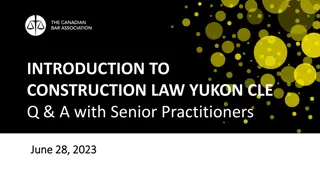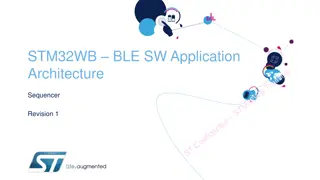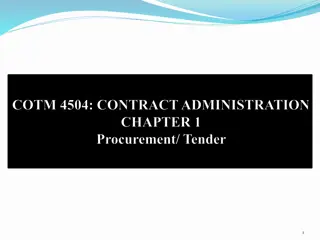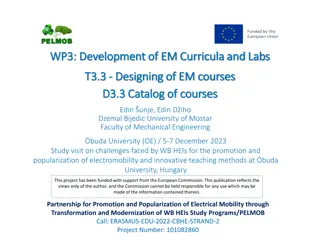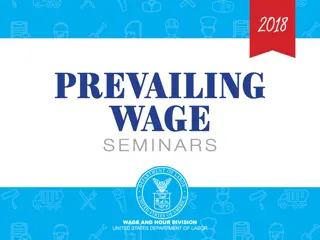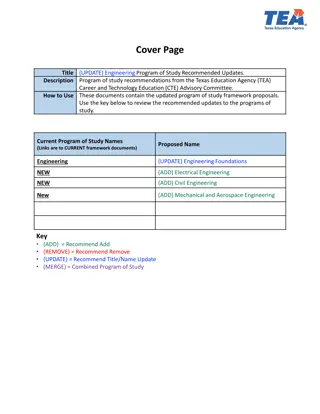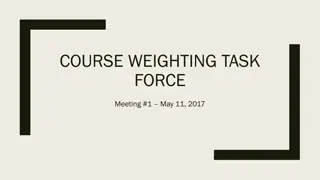Construction & Engineering Task List and Follow-up Session
This document outlines work packages for a construction and engineering project, including tasks related to thermal mock-up, monolithic chip, PET construction, critical topics, and module assembly.
Download Presentation

Please find below an Image/Link to download the presentation.
The content on the website is provided AS IS for your information and personal use only. It may not be sold, licensed, or shared on other websites without obtaining consent from the author. Download presentation by click this link. If you encounter any issues during the download, it is possible that the publisher has removed the file from their server.
E N D
Presentation Transcript
Created for Paralegal Training, Created for Paralegal Training, Namati Namati Sierra Leone Sierra Leone
A controversy before a court or a "lawsuit" is commonly referred to as litigation . If it is not settled by agreement between the parties it would eventually be heard and decided by a judge or jury in a court. Litigation is one way that people and companies resolve disputes. The term "litigation" is sometimes used to distinguish lawsuits from alternate dispute resolution methods such as: "arbitration - a private arbitrator would make the decision mediation - a type of structured meeting with the parties and an independent third party who works to help them fashion an agreement among themselves.
A dispute is in litigation become the subject of a formal court action or law suit (duhaime.org) lawsuit, or "suit in law", is a civil action brought before a court of law in which a plaintiff, a party who claims to have suffered injury/loss/damage from a defendant's actions, seeks a legal or equitable remedy litigation' (or being 'litigated') when it has A lawsuit The defendant is required to respond to the plaintiff's complaint. If the plaintiff is successful, judgment will be given in the plaintiff's favour, and a range of court orders may be issued to enforce a right, award damages, or impose an injunction to prevent an act or compel an act.
The conduct of a lawsuit is called litigation has a tendency to litigate rather than seek non- judicial remedies is called litigious litigation. One who litigious. A lawsuit may involve dispute resolution of private law issues between individuals, business entities or non-profit organizations. A lawsuit may also enable the state to be treated as if it were a private party in a civil case, as plaintiff or defendant regarding an injury, or may provide the state with a civil cause of action to enforce certain laws.
Plaintiff suffered injury/loss/damage Defendant sought Natural persons Juristic persons The state Plaintiff: party who claims to have Defendant- person against whom remedy is
Gathering of facts Research Identification of authorities Letter before action
Presentation of claim and defence/counterclaim Evidence-in-chief Cross- examination Re-examination Burden of proof Standard of proof- balance of probability Judgment balance of probability
Enforcement/execution of judgment- bailiffs Writ of fieri facias Writ of possession Attachment of debt Garnishee
Presentation of evidence and defence Evidence-in-chief Cross- examination Re-examination Burden of proof (see: Woolmington v DPP 1935, next slide) Standard of proof- beyond reasonable doubt Trial by judge alone Trial by jury Verdict Plea in mitigation- allocution Sentencing beyond reasonable doubt
This is a famous case in English law, where the first articulated Reginald Woolmington was a 21-year-old farm labourer. On November 22, 1934, three months after his marriage to 17-year-old Violet Kathleen Woolmington, his wife left him and went to live with her mother. On December 10 Woolmington stole a shotgun and cartridges from his employer, sawed off the barrel, throwing it in a brook, and then bicycled over to his mother-in-law's house where he shot and killed Violet. He was arrested on January 23, 1935 and charged with the willful murder of his wife. Woolmington claimed he did not intend to kill her. He wanted to win her back so he planned to scare her by threatening to kill himself if she did not come back. When questioning her about returning, he attempted to show her the gun that he was to use to kill himself. By accident, the gun went off shooting Violet in the heart. The Trial judge ruled that the case was so strong against Woolmington that the onus was on him to show that the shooting was accidental. On February 14, 1935 Woolmington was convicted and sentenced to death. the presumption of innocence presumption of innocence was was first articulated in the Commonwealth.
On appeal to the Court of Criminal Appeal, Woolmington argued that the Trial judge misdirected the jury. The appeal judge discounted the argument using the common-law precedent as stated in Foster's Crown Law (1762). ... In every charge of murder, the fact of killing being first proved, all the circumstances of accident, necessity, or infirmity are to be satisfactorily proved by the prisoner, unless they arise out of the evidence produced against him; for the law presumeth the fact to have been founded in malice, unless the contrary appeareth
The issue was whether the statement of law in "Foster's Crown Law" was correct when it said that where a death occurred, it is presumed to be murder unless proven otherwise. In articulating the ruling, Viscount Sankey made his famous "Golden thread" speech: Throughout the web of the English Criminal Law one golden thread is always to be seen, that it is the duty of the prosecution to prove the prisoner's guilt defence of insanity and subject also to any statutory exception. If, at the end of and on the whole of the case, there is a reasonable doubt as to whether the prisoner killed the deceased with a malicious intention, the prosecution has not made out the case and the prisoner is entitled to an acquittal When dealing with a murder case the Crown must prove (a) death as the result of a voluntary act of the accused and (b) malice of the accused. The conviction was overturned and Woolmington acquitted. He was released three days before his scheduled execution date. one golden thread is always to be seen, that it is the duty of the prosecution to prove the prisoner's guilt subject to what I have already said as to the
Differentiating the burden of proof in criminal and civil cases Criminal It need not reach certainty, but it must carry a high degree of probability. Proof beyond reasonable doubt does not mean proof beyond a shadow of a doubt. If the evidence is so strong against a man as to leave only a remote possibility in his favour which can be dismissed with the sentence Of course it is possible but not in the least probable , the case is proved beyond reasonable doubt. Criminal case case Civil case It must carry a reasonable degree of probability, not so high as is required in a criminal case. If the evidence is such that the tribunal can say: we think it more probable than not , the burden is discharged, but if the probabilities are equal it is not. - Lord Denning Civil case
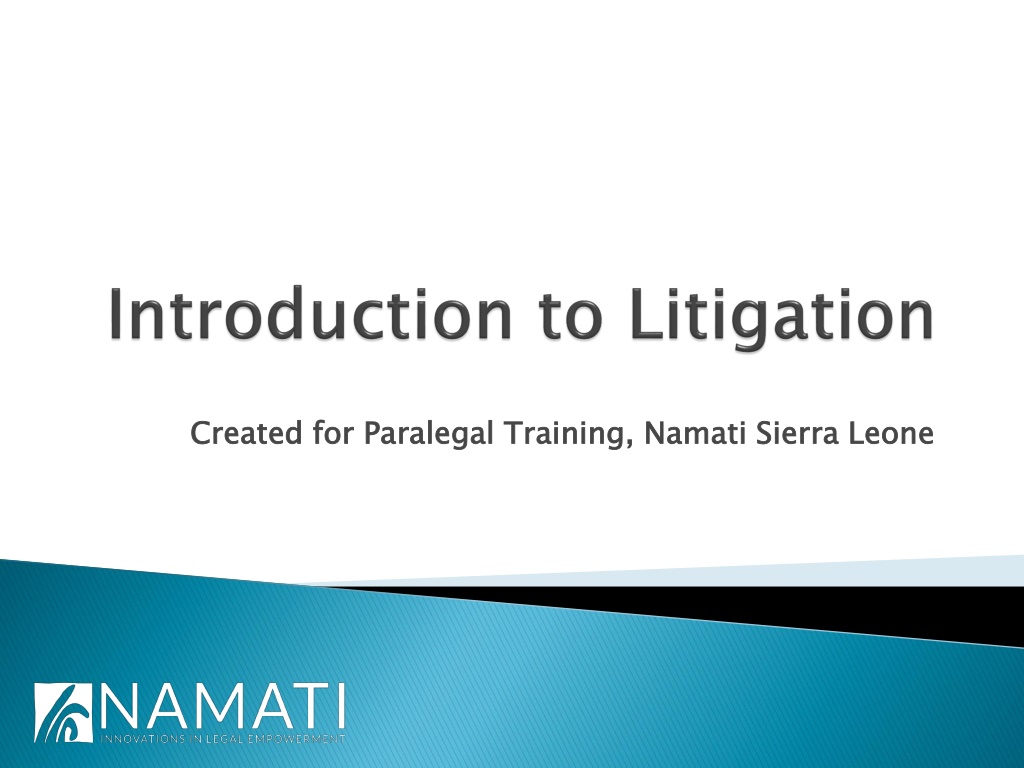
 undefined
undefined















